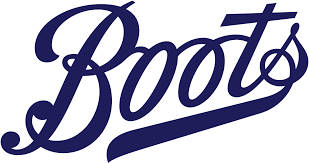 Cadbury
Cadbury
(Year Founded: 1824)
Cadbury was founded in 1824 when John Cadbury opened his grocer’s shop in Birmingham. Being a Quaker, he sold only tea, coffee, cocoa, and drinking chocolate.
Cadbury’s little shop grew in popularity so much that only seven years later in 1831, he was able to rent a warehouse in Crooked Lane, in the center of Birmingham. He began producing cocoa and chocolate there.
When the company’s former factory got too small in the 1870s, George Cadbury had a new vision of the future:
“Why should an industrial area be squalid and depressing?” he asked. “Why should not the industrial worker enjoy country air and occupations without being separated from his work? If the country is a good place to line-in, why not to work in?”.
The Cadbury business prospered at its new site at Bournville, and the company became famous for the advances in working conditions and social benefits for its workforce.
Recreational facilities at Bournville were numerous, and the company also arranged worker outings to the country and education schemes. This innovativeness was more than a century before tech giants made having fun at work famous again.
Cadbury employed women workers going right back to the 1850s. It was somewhat unique in promoting women to forewomen – most firms did not appoint women to these positions before World War I.
When Cadbury moved from Bridge Street to Bournville in 1879, it employed 140 women out of a total of 230 workers.
The recipe to Cadbury’s ‘Dairy Milk‘ chocolate remains a top-secret under lock & key by the company.
At the time of writing, Cadbury is one of the most popular chocolate brands in the world.
 Clarks
Clarks
(Year Founded: 1825)
Clarks had very humble beginnings.
James Clark made the first pair of Clarks in 1825 in the village of Street in Somerset, England. He used offcuts from his brother Cyrus’ tannery to create a sheepskin slipper.
Within a year, the brothers were selling 1,000 pairs a month.
At the time of writing, C & J Clark International Limited has over 1,000 stores around the world.
They also sell their products through third-party distributors. The Clark family owns 84% of Clarks.
Employees and other institutions hold the additional 16%.
 Boots
Boots
(Year Founded: 1849)
Boots was founded in 1849 by John Boot as a small family herbal medicine shop in Nottingham. No they don’t make or sell boots – for those see Clarks above!
John Boot died in 1860 and his son, Jesse Boot, then only aged 10, took over helping his mother run the family business. By 1883, the company got incorporated as Boot and Co. Ltd.
For ibuprofen, Boots Research Department was awarded the Queens Award for Technological Achievement in 1985. Stewart Adams, who was the main part of a team from Boots which developed the painkiller, received an OBE in 1987.
At the time of writing, Boots UK is one of the most significant health and beauty retailers in the United Kingdom, with over 2,485 stores across the UK. Apart from health and beauty products, Boots also provides optician and hearing care services.
When asked about the secret to their long-term success, the President & Managing Director of Boots UK, Seb James, said:
“For almost 170 years, Boots has been a loved and trusted staple of the British high street, remaining true to the ideals of its founder to provide affordable healthcare for the community. This philosophy and heritage are still integral to our business today, and our brand is shorthand for quality, trust, and accessible prices.”
“Pharmacy and Healthcare has always been at our core, and we continue to invest in improved technology to make our pharmacies simpler and enable our pharmacists to have even more time to focus on delivering great care. Digital healthcare will be critical to meeting future patient needs. Whether it’s trialing and introducing new services, like our Mole Scanning Service, that help us take control of our health, or developing new product brands that help make our customers feel good, such as recent launch YourGoodSkin, we are always looking for better ways to serve our customers.”
“As part of a global pharmacy-led, health and well being enterprise Walgreens Boots Alliance, our vertical integration grants us unique access to knowledge, expertise and additional growth opportunities. From our R&D to our distribution network and our huge store footprint, we have an in-depth understanding of customers and the ability to react quickly to changing needs. It all starts with customer insight from our Boots Advantage Card, one of the largest loyalty schemes in the UK, which helps us to see what our customers are buying, how well a new product is received and the potential for it to grow in the market. It also allows us to offer a leading range of own brands like No7, Soap & Glory, Botanics and Liz Earle that meet the needs of our wide customer base.”
“Boots UK’s recipe for long-term success and longevity is not really a secret… it’s a matter of staying true to our values and remaining relevant to our customers by responding to their changing needs.”
PS Notice how Cadbury’s and Boots have stylized script logos. This was fairly common at that time and all done by hand. It is just great to see how they have survived, even though it is very hard to create this style from scratch in a computer.
(C) 2020 Rosie Reay and Brighter Naming



 Join
Join